| Analemma |
| https://russellgoyder.github.io/sundial-latex/ |
 |
Russell Goyder has a new Python program simply called Analemma. But the program is far from simple as it is able to compute the shape and provide visualizations of the analemma for any planet in our solar system. His documentation and approach chooses to use the inertial frame of our solar system and apply vectors of position to determine the analemma and equation of time. "From the documentation, you can run and modify any [Python Jupyter] notebook yourself by clicking on the 'launch binder' button." Analemma uses SymPy and GAlgebra to encode and present the mathematics of the analemma.
A number of authors have used vector algebra to obtain the trigonometric formulas many of us use as dialists. Goyder, however, uses the world of geometric algebra that consists of "outer products" and "bivectors". The terms are unfamiliar to many, but when explained, result in creating the familiar trig formulas. An introduction to geometric algebra can be found at https://bivector.net/ There are several videos showing the relationship between vectors, complex numbers and geometric products.
|
| Archaeoastronomy |
| https://www.archaeoastronomy.com/2000.html |
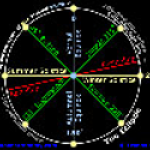 |
Want to know the exact time of sunrise in 2000? Or Carl Lehrburger's account of an equinox site with a noon hour sundagger formed by fallen rock? Then this site is for you. Uncommon information is provided such as "Old Celtic calendars observed Cross Quarters, approximately midway between each pair of adjacent Equinox and Solstice days. Unlike modern calendars that define the start of a season on a Solstice or Equinox, the Celts perceived Solstices and Equinoxes as events occurring mid-season, with the seasons actually beginning and ending on the Cross Quarters." Interesting bibliography on ancient American petroglyphs and alignments. |
| Atmospheric Refraction |
| https://www.archaeocosmology.org/eng/refract.htm |
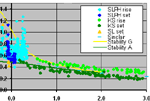 |
Ever wonder how atmospheric refraction affects the position of the sun? Especially at sunrise and sunset. This website by Victor Reijs presents a very technical view of atmospheric refraction with empirical as well as formulas for the position of the sun at rise and set. Extensive links to other sites on atmospheric refraction. |
| Azimuth and Elevation of the Sun |
| https://www.infraroth.de/index.html?nav_p.html,aziele.html |
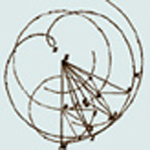 |
Here is Dr. Daniel Roth’s simple Azimut und Elevation der Sonne calculator based on equations from Pfeger’s Astronomy with the Personal Computer. Simple to use. There are other programs as well, including a calendar for any year, and the date of Easter. |
| CadSol |
| https://cadsol.web-pages.fr/ |
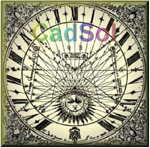 |
CadSol creates many different types of sundials including horizontal and vertical (with ability to decline or incline the dials), and those with polar gnomon, analemmatic, bifilar, cylindrical (Shepherd's Dial), and dials on multiple planes.
The software allows use of both local solar time and civil time, correcting with the Equation of Time and longitude. Also allows Italian, Babylonian, Temporal, and Sidereal hours. Plots may include the Equinox and Solstices and additional Zodiac date lines or particular user dates.
An added feature is the creation of 3D animations of the dial to visualize the shadow lines. For Windows, Linux, and Mac. |
| CalCad |
| https://gnomonique.fr/calcad/ |
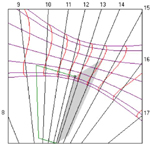 |
CalCad is a program for drawing horizontal and vertical sundials (including declination and inclination) by Yvon Massee. Versions are available for Windows, Linux, and Mac. |
| Cartesius Sundial Software |
| http://www.anselmi.vda.it/CartesiusWebEvo.aspx |
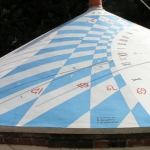 |
Riccardo and Andrea Anselmi have created software design tools to create a wide variety of sundials, including horizontal and vertical declining sundials, cylindrical, conical, bifilar, and other types of sundials. They now offer Cartesius Web |
| Daylight World Map |
| https://spwebgames.com/daylight/?mapType=topographic |
 |
This program by Steven Pugh is an JAVA applet to show which parts of the globe are in daylight and which are in darkness. The position of the sun (projected on to the Earth) is shown as a yellow circle. Various locations around the world can be selected, and the date and time can be changed. For the currently selected location and the current date and time, information such as the number of daylight hours and sunrise/sunset times are shown in a panel on the right-hand side. A plane or topographic map can be selected. JAVA run time plugin is required for your browser. |
| Delta CAD |
| https://www.deltacad.com/ |
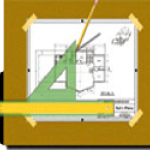 |
Delta CAD is a favorite computer aided design (dialing) program. First, you can import sundial designs from programs such as de Vries ZW2000, SONNE, and use Delta CAD to add final touches or you can choose from existing "Basic Programs" that direct Delta CAD to draw sundials on its own. Lots of instructional help is available from Carl Sabanski's Sundial Primer |
| Earth and Moon Viewer |
| https://www.fourmilab.ch/earthview/credits.html |
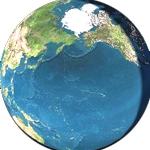 |
Have you ever wondered what the division between day and night might really look like from space? The Earth and Moon visualizer does exactly that. Created by John Walker, co-founder of Autodesk, a variety of globe and topographic map views are available at the click of a mouse. Clouds? Today's weather? City lights? It's all there at your command. And click on "Details" explains how this all came about and the resources used to assemble these remarkable views. |
| National Renewable Energy Laboratory |
| https://midcdmz.nrel.gov/solpos/spa.html |
 |
And you though the Department of Energy was only about electricity? The National Renewable Energy Laboratory (NREL) provides a solar calculator with many options: position, declination, sunrise, sunset and much more. Prints a table of data for any start to end date. NREL's Solar Position Algorithm calculates the solar zenith and azimuth angles in the period from the year -2000 to 6000, with uncertainties of +/- 0.0003 degrees based on the date, time, and location on Earth. Further information and actual C-code of the algorithm may be downloaded: Reda, I. and Andreas A. report Solar Position Algorithm for Solar Radiation Applications, NREL Report No. TP-560-34302, Revised January 2008 |
| NOAA Solar Calculator |
| https://www.esrl.noaa.gov/gmd/grad/solcalc/ |
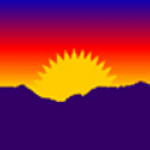 |
The National Oceanic and Atmospheric agency (NOAA) provides sunrise-sunset calculator and calculator for solar declination, azimuth, elevation, and equation of time. PDF files are available for low and high accuracy solar position equations as well as sun. There are both "old" and "new" calculators. The old provides tables of data, the new provides a more graphical interface on a world map. NOAA also provides links to other solar calculators. |
| Orologi Solari e Meridiane |
| https://www.sundials.eu/indexENU.htm |
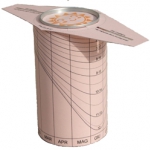 |
Want software that allows you to draw a variety of gnomonic sundials with a variety of details? Then Orologi Solari e Meridiane is the site for you. Gian Casalegno, an experienced Italian sundialist, offers both software and explanations of sundial construction. Illustrated here is the orologio del pastore, the shepard dial. (To allow easier construction, the gnomon is actually a slit in the top cardboard flange.) Want to draw dials with Babylonian (Hours from Sunrise) or Italian Hours (Hour to Sunset) or Temporal Hours (12 hours in the daylight)? It’s available at the click of a button with Gian’s software. |
| Photographer's Ephemeris |
| https://photoephemeris.com/ |
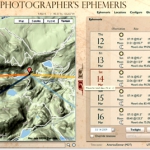 |
What happens when you combined Google Maps with a Luni-Solar ephemeris? The answer is The Photographer’s Ephemeris, a wonderful (and free .. but donations accepted) program by photographer and programmer Stephen Trainot. The program is nicely laid out and easy to use. You can use the program to determine sun or moon rise and set against a real landscape of mountains and irregular terrain. And if you climb a mountain, you’ll find that your sunrise occurs just a bit earlier and your sunset just a bit later due to elevation depression. If Ansel Adams had this! |
| Shadows Pro |
| https://www.shadowspro.com/en/index.html |
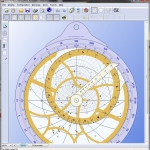 |
Want to create an astrolabe? A planisphere? Or one of a wide variety of sundials? François Blateyron has created a series of software programs suitable for the first time dialist or for experts. A testimonial comes from Jim Tallman of Artisan Sundials: “You may be interested to know that, for the 6th year, I used Shadows to lay out the Sawyer Prize Dial for NASS (North American Sundial Society), a special edition Spectra sundial. There are now 350+ Spectra dials out there under the sun, in 7 countries and about 40 US states. I used Shadows for every one of them. I use Shadows almost every day - I guess that makes me one of your power users! Thank you again for making it and for your ongoing efforts to continually improve it!” Shadows Pro is a very polished software for sundial makers. The entry level software is free of charge, with Expert and Professional level software costing from 20 to 60 € |
| SONNE - Sundialist's Software |
| https://www.helson.at/ |
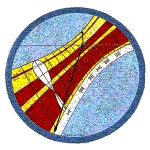 |
This is the website of Helmut Sonderegger, offering several sophisticated programs for constructing over 20 different dials with "Sonne", a general sundial construction program and "Alemma" devoted to making analemmatic sundials. The programs offer many options for setting latitude, longitude,gnomon origin, line colors, dial furniture and auxiliary lines, and text options. Once the sundial is constructed, it can be saved in several different formats including DXF for etching or machining. |
| Sun & Moon Simulator |
| http://astro.unl.edu/animationsLinks.html |
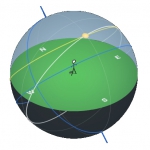 |
Astronomy Education at the University of Nebraska at Lincoln provides a rich resource of animations to better understand "seasons, the moon phases, coordinate systems, light, and much more." Their sun simulator shows the motions of the sun. Move the sun by the hour or through the year. Select a display of the sun's declination circle, ecliptic, and analemma. The rotating sky lab has an instruction manual for the teacher and pre/post testing. There is an Ecliptic Simulator to show the path of the sun along the ecliptic during the year and a Daylight Simulator that shows a map of the earth and day/night for a particular day and time. Animations use Macromedia Flash (.swf) files. |
| Sundial Generator |
| https://sundial.gennetten.org/ |
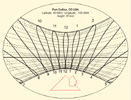 |
Douglas Gennetten, artist, sculptor, and sundial enthusiast has written an on-line sundial generator for all to use. The app has many user selected options for drawing lines, line color and style, and hour mark font size to name a few. Currently the generator draws horizontal dials with hour lines and with or without analemmas (full or winter to summer or summer to winter) and unique options for the style of gnomon (including a cut and fold-up gnomon). In the near future Gennetten's sundial generator will create vertical dials, either south facing or declining with the same kind of easily selectable options Once your sundial is created, it can be quickly downloaded as a PDF file or exported as a PNG image. |
| Sustainable by Design |
| https://susdesign.com/tools.php |
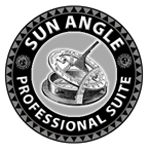 |
Sustainable by Design provides a suite of shareware tools on sustainable energy topics, including sun angle, sun position, and solar path. Good resource for both dialist and architect. Analyze louver shading and window overhang design. Sustainable by Design provides monthly climate, clouds, sun, temperature, and more for over 250 cities throughout the United States. Data is presented succinctly in graphs. Find out how much sunlight your city gets each month! |
| The Sundial Primer |
| https://www.mysundial.ca/tsp/tsp_index.html |
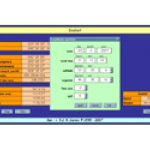 |
On Carl Sabanski's Sundial Primer you can find basic definitions of sundialists and descriptions of how to make 39 different sundials. There are globe dials and horizontal dials, equatorial and vertical dials. And tools for calculating them. For example "SUN", an Excel spreadsheet application developed by dialist Ricardo Cernic. It provides a full solar ephemeris in English, Portuguese, French, Spanish. Provides Italian, Babylonian, and Temporal Hours as well as Local Solar Time and Sidereal Time. This is only one of many software apps freely provided by Carl Sabanski. This is a must visit site for anyone interested in dialing software. |
| ZW2000 Sundial Design Software |
| http://www.sundials.org/images/NASS_Software/zw2000version2.zip |
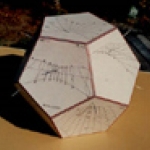 |
Fer J. de Vries created the most useful sundial construction software called de Zonnewijzerkring, or simply ZW2000. It is written for both 32 and 64 bit (Windows based) computers, and is intended to give accurate and exportable drawings (DXF and PLT format) of all the lines and curves you will need to make your sundial. The exported drawings can be polished in other programs such as Delta CAD.
Fer J. de Vries site is no longer available, but the software is made available through NASS as a zip file using the above link. |